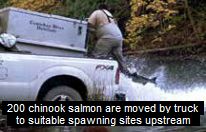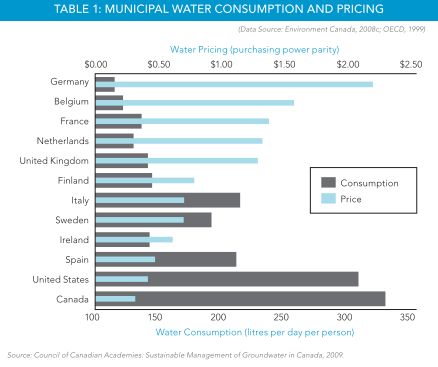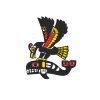by David Slade, Watermark, Spring 2015
Priceless Treasure or Worthless Excess?
On this beautiful, wet coast, it is often hard to convince people that we should treasure our fresh water resources, especially when we are just recovering from a typical long, soggy winter. However, there are factors at play that may force us to start treating our water with a lot more respect than it currently enjoys.
THE COWICHAN WATERSHED BOARD
The Cowichan Watershed Board (CWB) is a group of 12 individuals representing local government, First Nations, Federal and Provincial Fisheries, Ministry of Environment, and local citizens. The CWB has a mandate to pursue a number of initiatives including water quality, aquatic ecosystem health, riparian area protection, public engagement and education, and water conservation. All of the goals of the CWB are aimed at continuous movement towards sustainability in the face of ever-changing circumstances, including growth pressures and climate. The main climate change issue is the fact that we are getting more extended summer dry spells and less of the snow pack that historically melted slowly and maintained inflows well into summer.
DROUGHT STRANDS SALMON
 2014 was a year of near-record drought in the Cowichan Valley, and the fourth year in the past dozen that river flows reached a critical low level in late summer to the point where fish were dying due to high temperatures. Plans were being made once again to trap and truck the iconic Cowichan River Chinook Salmon from the estuary, past the nearly dry lower reaches to the upper river and lake spawning grounds.
2014 was a year of near-record drought in the Cowichan Valley, and the fourth year in the past dozen that river flows reached a critical low level in late summer to the point where fish were dying due to high temperatures. Plans were being made once again to trap and truck the iconic Cowichan River Chinook Salmon from the estuary, past the nearly dry lower reaches to the upper river and lake spawning grounds.
While the worst of the crisis was averted thanks to some late summer rains, the brown lawns, swimming closures and dry wells helped us to catch public attention and shine a spotlight on the need to respect and conserve our most important if not “valued” natural resource.
It was the drought and surface water crisis that captured the attention of many valley residents, but the problem runs deeper than that. Most of the Cowichan Valley, including the City of Duncan and much of the Municipality of North Cowichan, draw their water from wells drilled into local aquifers. The Cowichan River aquifer is one of the best quality and most productive aquifers in the province. The main wells serving the region are less than 35 metres deep and produce many thousands of litres per minute. Although the pumping of this aquifer may be affecting summer Cowichan River flows, the aquifer itself fully recharges every winter with the rains and high river levels. The same cannot be said for some of the other aquifers in the region. There is evidence that in some areas the aquifers have dropped more than 100 ft. and in others a drop of just 25 ft. has resulted in deep wells going completely dry. As well, the lowest water levels ever recorded were seen on several Ministry of Environment observation wells. These aquifers have dozens of private wells drilled into them, but they are also shared by several water utilities.
IGNORANCE PREVAILS
It was a shocking revelation from a survey conducted by the CWB, that in most regions of the Cowichan Valley residents know very little about their water. In fact, throughout the region more than half of those surveyed did not know if their water was groundwater from wells, or surface water. As water purveyors and professionals, our greatest challenge may be educating users about the changing realities of water supplies and that wasting water is no longer an affordable option.
WATER WOMAN TO THE RESCUE
 Convincing water purveyors and Cowichan Valley residents that our water is truly valuable became the focus of the CWB “Water Conservation Challenge.” The project was launched with a presentation by David Slade called “Dinosaur Pee and the Future of our Water” shown at our local university campus auditorium. We enlisted the help of our own newly minted superhero “Water Woman.” A hip, young caped crusader who visited schools, public events, local business, and government offices handing out toilet leak test kits, and spreading the word about the benefits of respecting our water supply, while inviting individuals to sign a pledge to save water.
Convincing water purveyors and Cowichan Valley residents that our water is truly valuable became the focus of the CWB “Water Conservation Challenge.” The project was launched with a presentation by David Slade called “Dinosaur Pee and the Future of our Water” shown at our local university campus auditorium. We enlisted the help of our own newly minted superhero “Water Woman.” A hip, young caped crusader who visited schools, public events, local business, and government offices handing out toilet leak test kits, and spreading the word about the benefits of respecting our water supply, while inviting individuals to sign a pledge to save water.
Presentations were made to most local governments and water utilities in the greater Cowichan Valley region, highlighting the compounding costs of excessive water consumption, both financial and environmental, and inviting them to join the valley-wide effort to reduce water use. Financial costs can include increased storage and supply requirements from dams and towers to wells and intakes, transfer costs including pumps, mains and treatment and the energy costs for moving and processing water. The point here being that “Water saved is money saved;” meaning less burden on the system and less need to grow the system means that all customers ultimately benefit from system-wide conservation. Environmental costs may include lack of dilution for increased sewage flows and reduced habitat, including fish flows due to surface water withdrawals and drawing down of aquifers closely connected to surface water bodies.
 During the presentations, CWB offered water utilities the opportunity to share and compare their consumption data with fellow water purveyors and to engage their citizens in making better use of their water. Many may already know that Canadians are amongst the most wasteful water users on the planet. In fact, according to the Council of Canadian Academies, we use more water per person than any other nation. This includes nations such as France and Germany that have very similar climates and lifestyles. There may be several reasons why the average citizen of Germany uses less than half as much water as an average Canadian, but the thing that is glaringly obvious in a cost versus consumption comparison (Table 1) is that there is an almost linear inverse relationship between the price of water and the amount of water consumed.
During the presentations, CWB offered water utilities the opportunity to share and compare their consumption data with fellow water purveyors and to engage their citizens in making better use of their water. Many may already know that Canadians are amongst the most wasteful water users on the planet. In fact, according to the Council of Canadian Academies, we use more water per person than any other nation. This includes nations such as France and Germany that have very similar climates and lifestyles. There may be several reasons why the average citizen of Germany uses less than half as much water as an average Canadian, but the thing that is glaringly obvious in a cost versus consumption comparison (Table 1) is that there is an almost linear inverse relationship between the price of water and the amount of water consumed.
Each water purveyor was asked to fill in a questionnaire about the size of their system, their water source and treatment, the total volume of water distributed and the number of commercial and residential users they serve. While conservation is being encouraged for all users including commercial and agricultural, it is the domestic customers who we have chosen to use for comparison.
LADYSMITH SHINES
It was the amazing efforts in the Town of Ladysmith, led by former Mayor Rob Hutchins, that first gave us the idea of the Water Conservation Challenge. During the period of 2003 to 2013, Ladysmith was able to reduce net water consumption by 25%, or approximately 418,000 cubic metres, despite a population increase of 20% over the same time period. They accomplished this through a series of initiatives that included public awareness, quarterly billing, informative invoices that show clients how they compare to other users, and tiered block pricing that rewards those who conserve, and penalizes those who are excessive users. Surprisingly, there are still some areas in and around Duncan that are not yet metered, although work is in progress to meter all connections in the next few years.
The town of Ladysmith and the Mill Bay Water District are local leaders in water conservation so far, having achieved an average per person daily consumption of 246 litres. This compares favorably with the 2011 Canadian average of over 250 l/person/day, but is still a long way from the average in Germany where they use only about 120 l/p/d. Not surprisingly, the cost of water in Germany averaged approximately three times the cost of water in Canada. Advocating for higher water pricing will certainly be a thankless task, and those who are “water wise” must be rewarded for their conservation, but the data clearly shows that pricing must play a significant role in reducing consumption.
Our challenge starts this spring with newspaper advertisements congratulating and naming all of the water districts which have signed on. Statistics will be shared between all parties, and progress will be reported publicly. The goal is to reduce per capita water consumption by 20% over a four-year period and engage the entire community in a fun and friendly competition.
SUSTAINABILITY STARTS AT HOME
While conserving water is not the sole secret to sustainability, it is a great way to engage the public. And if we can make the connection to the point where people see and appreciate the true value of their water, perhaps we can convince them that the value is not just in the water, but in the entire watershed that must be respected if it is to continue to provide us with good clean water and so incredibly much more.Learn more about the Cowichan Watershed Board by visiting their website at www.cowichanwatershedboard.ca.
ABOUT THE AUTHOR
David Slade is a founding member of the Cowichan Watershed Board and has been a volunteer since its inception five years ago. David is a sustainability activist, and has more than 35 years of experience in the groundwater industry working with his family’s third-generation Cowichan Valley based well drilling business, Drillwell Enterprises Ltd.
David is a Past President of the BC Groundwater Association and has been an executive member since 1998. David served on the advisory committee for the BC Water Sustainability Act, and he is an active community volunteer and supporter.
This article was published in the Spring 2015 issue of Watermark Magazine, the journal of the BC Water & Waste Association. Permission to reprint here is being requested.
 Email
Email



